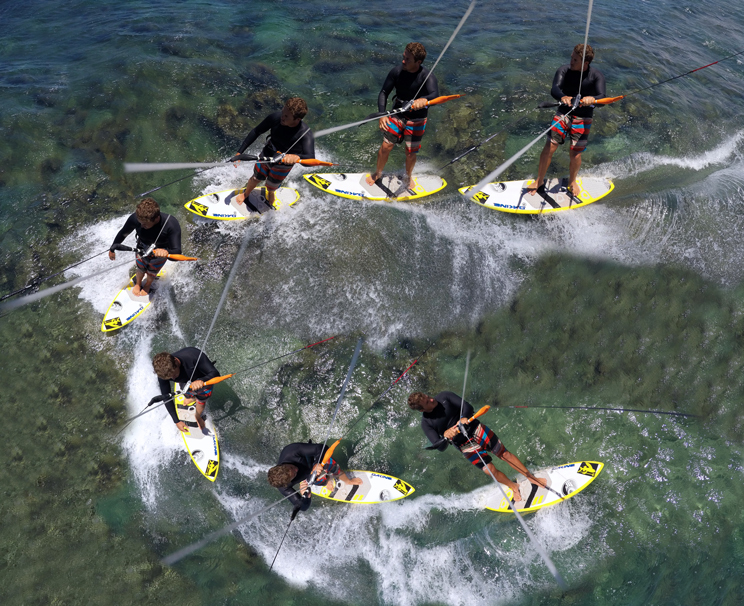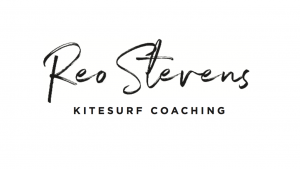
So you’ve mastered the art of the twin tip and have decided to take the next step towards expanding your board riding abilities by taking on the directional surfboard. You find yourself up and riding without a problem until you realize that you’re no longer on a double-ender and you are going to need to turn around by switching your feet. One of the easiest ways to do this is to Jibe. A Jibe is a downwind turn.
STEPS:
1) Release your edge and start riding flat on the board. Begin to bring your kite up towards the 12 o’clock position.
2) As you begin moving your kite to 12 o’clock start turning your board downwind and shifting your weight forward onto your front foot.
3) As your kite approaches the 12 o’clock position and you feel yourself becoming lighter on your board from the lift of the kite, you switch your feet. The lift of the kite making you lighter on your board is a key part to smoothly transition your feet.
4) You should be able to swap your feet in two steps: your front foot should be at a 45degree angle to your board so when you feel yourself light on the board, take your back foot’s big toe and place it as close to your font foots big toe. This will be your most unstable point so be sure to spend the least amount of time in this position. Feel free to use the pull of the kite and the bar to help keep you steady.
5) The moment you feel your back foot steady on the board, take your front foot and put it where your back foot was. At this time your kite should be passing 12 o’clock and heading to 1.
6) Your feet are switched so continue to bring the kite down towards the water to keep your forward momentum going and head back the direction you came from.
TIPS:
1) You can switch your feet before, after or during the turn; the choice is up to you as whatever feels the most natural will be easiest, but the steps to changing your foot placement will be the same.
2) Keeping your weight centered on the board is key, by doing so you will keep the board stable. Stepping wildly around and off centered on the board will increase the difficulty of staying on the board and completing the Jibe.
3) Switching your feet by jumping is not ideal, it can be done, but unless your feet land perfectly in place, you will fall off of the board.
4) Remember, you feet are simply switching positions, not creating new ones… Your back foot becomes your front and your front becomes your back. You went into the turn with your feet in the ideal spot on the board so it only makes sense that that is where they need to be when you finish the turn.
5) Taking your back hand off the bar allows you to twist your upper body and counterbalance yourself throughout the turn.
Want to take this Tutorial to go? Download the E-book by signing up to the Reo Stevens Coaching mailing list to take this an many more tutorials with you to the beach on your mobile device! You’ll also stay up to date on new tutorials and travel trips offered by Reo Stevens Coaching.